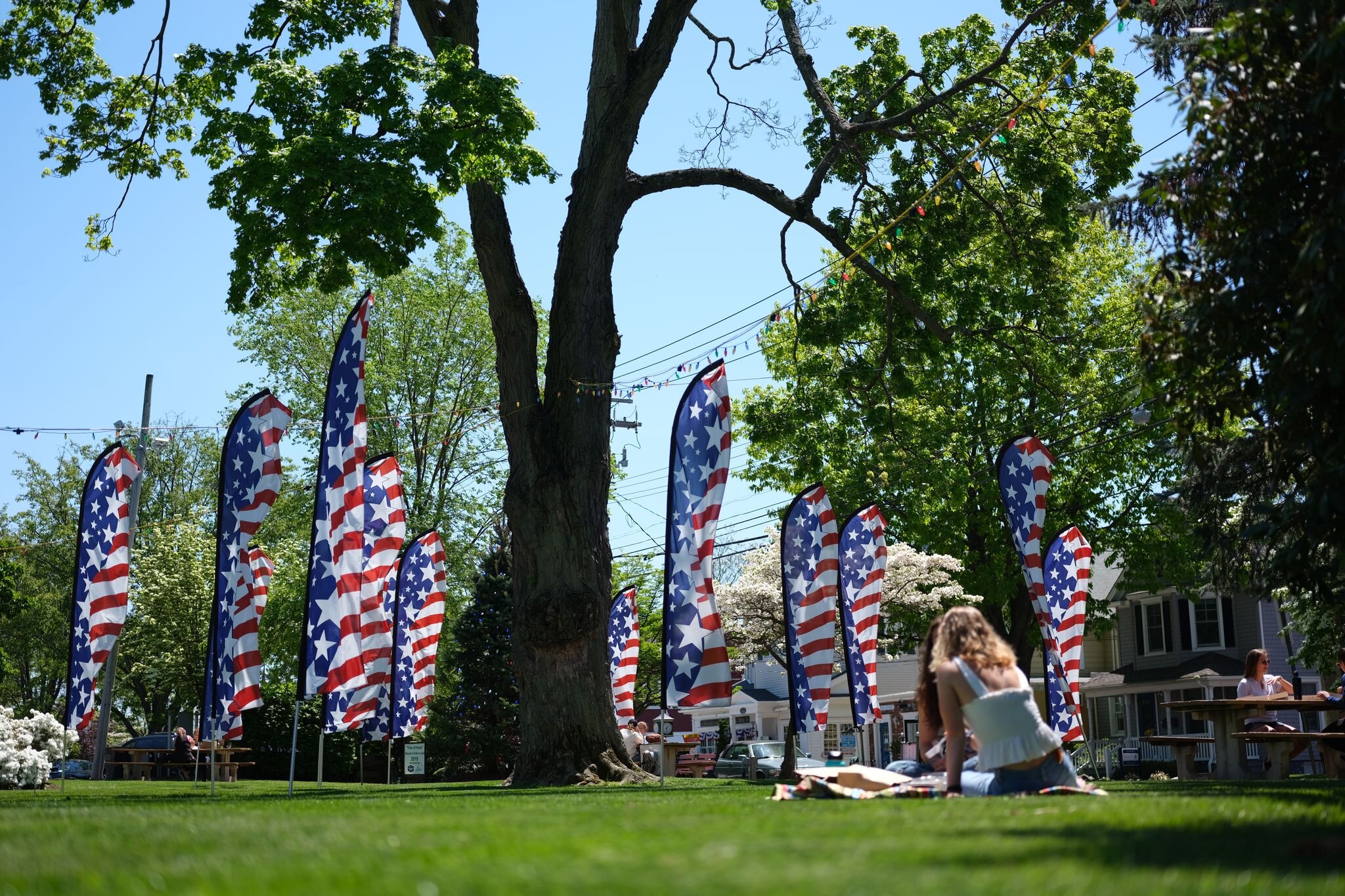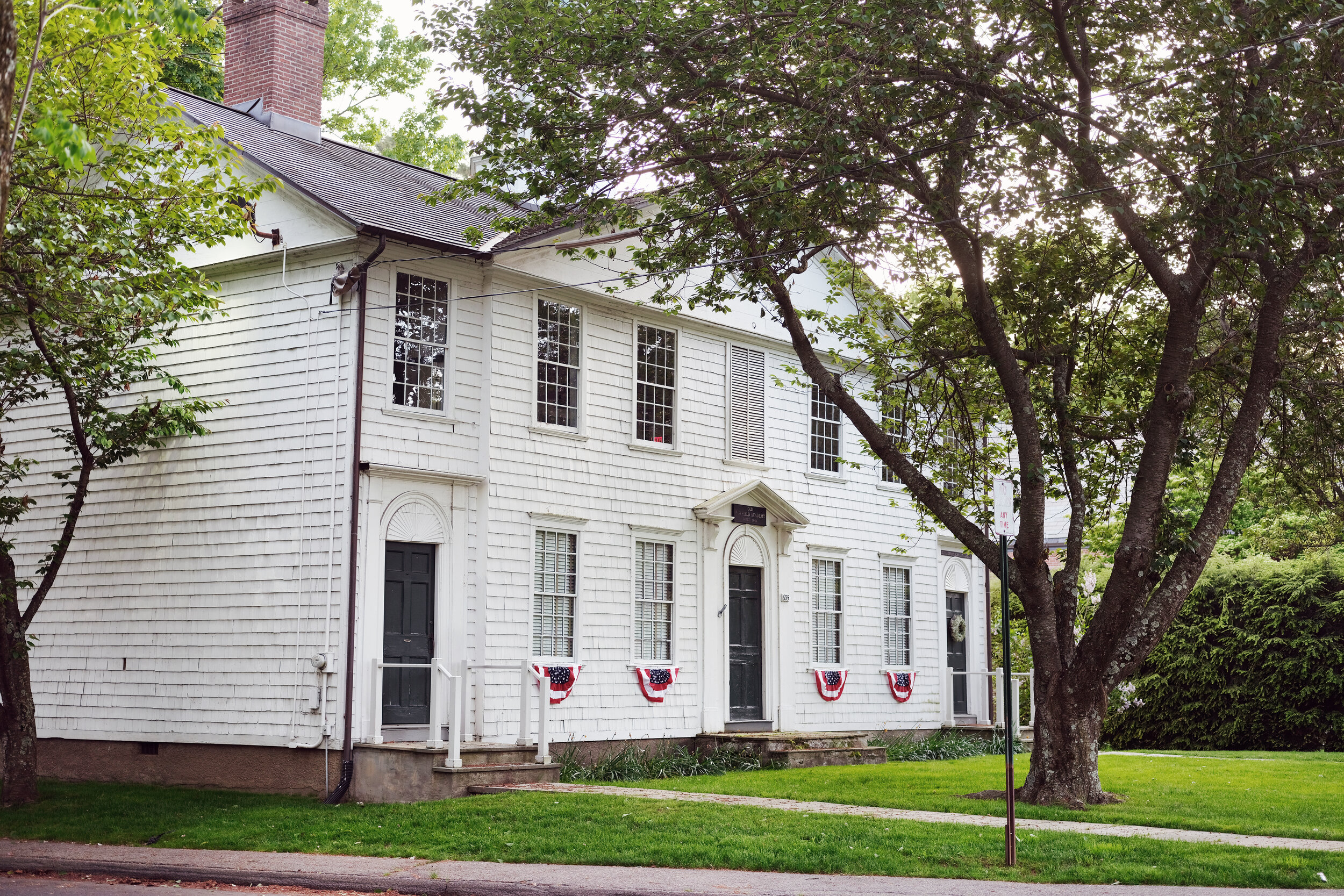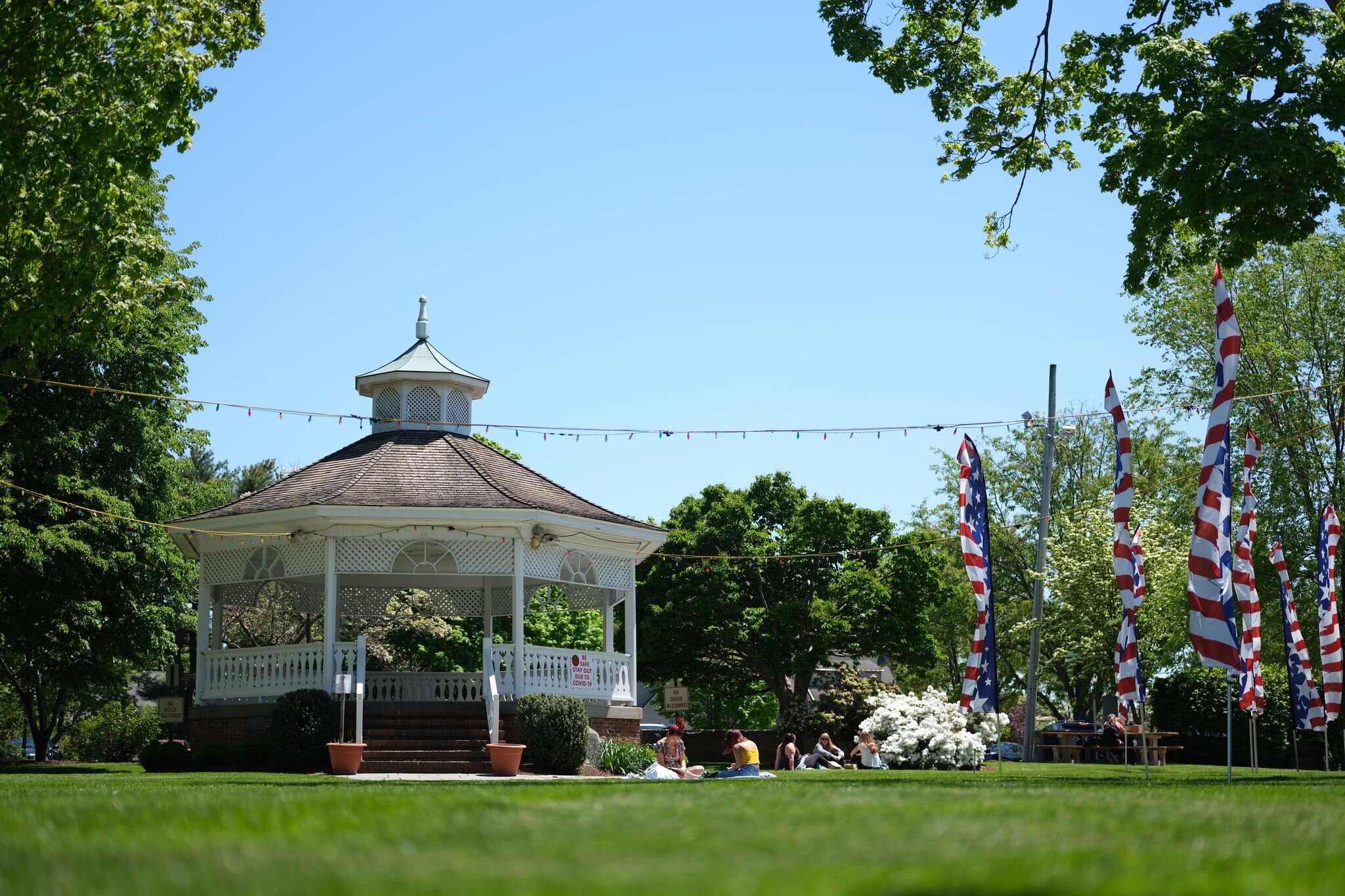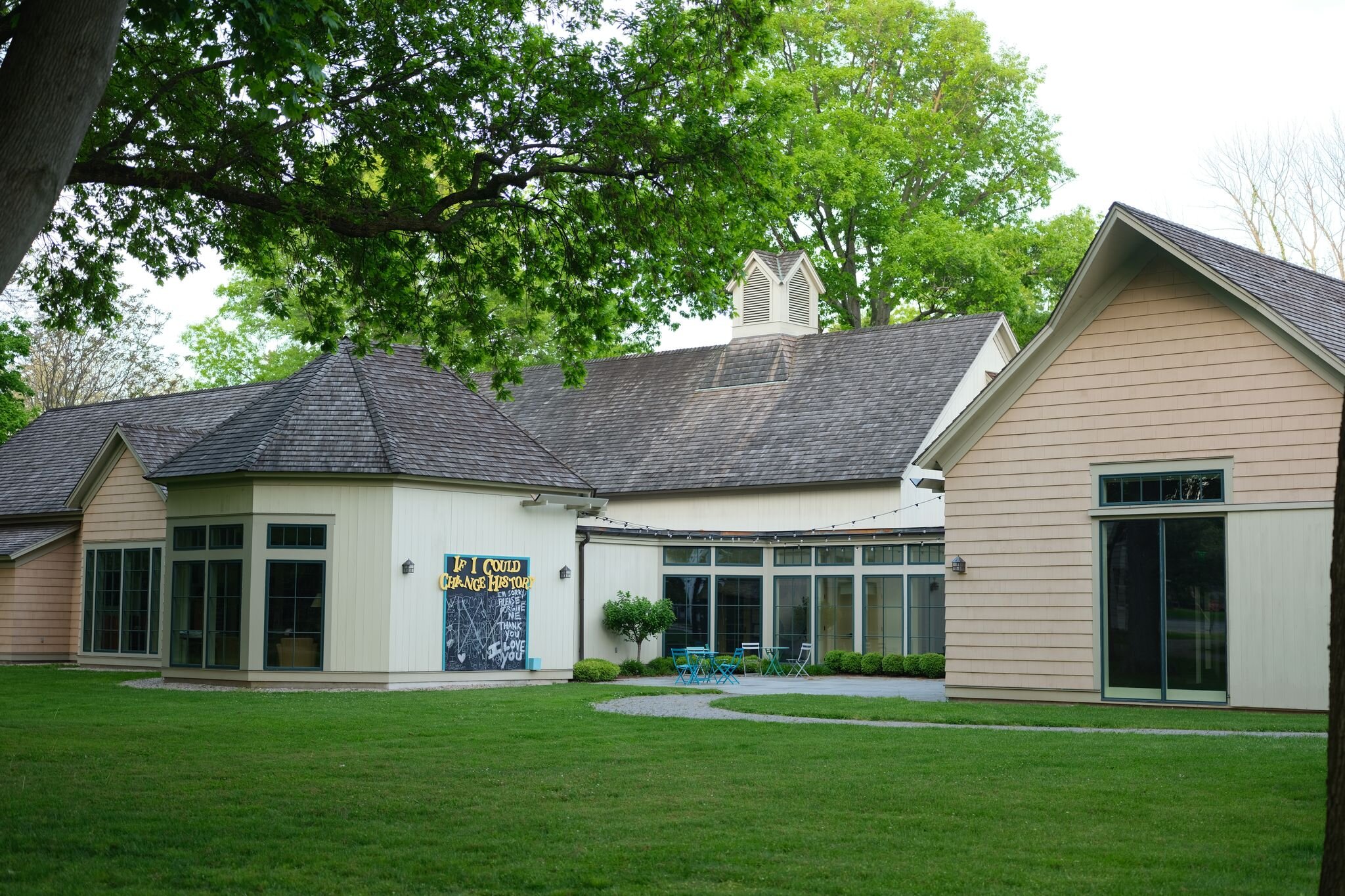The Historic District Walk
This tour offers self guided audio
Walk though Fairfield’s central Historic District, marvel at the storied Burr Mansion, and admire several of the town’s important landmarks and highlights. Read or listen to the fascinating history of your surroundings as you explore and uncover some of Fairfield’s hidden gems.
Starting Point: Gazebo on Roger Sherman Green in downtown Fairfield.
Address: 1451 Post Rd, Fairfield, CT 06824
Distance: 1.4 miles
Tour Time: 1 hour, including brief stops
Terrain: Flat
Listen While Touring:
Step-By-Step Directions and Points of Interest:
OLD POST ROAD
1) Start at the Gazebo on Roger Sherman Green in downtown Fairfield
roger sherman Green
2) Walk one block East on the Post Rd to the Old Post Road and turn right. The Chase Bank is on your right
Post rd | Old post Rd | Chase Bank
Fairfield is one of the oldest towns in Connecticut, founded in 1639 by English immigrants who wanted to build a farming village based on Puritan religious values. The historic district includes 75 buildings on both sides of the Old Post Rd as well as Beach Rd from Old Post Rd to Sunnieholme Dr. Fairfield maintains strict rules about what owners can do to the front of homes in the district, which is listed in the National Register of Historic Places.
3) At the three way stop, cross to the other side of the street then turn left
three way stop | cross | turn left
The Historic District runs along Old Post Rd and Northern part of Beach Rd.
There are colonial era stone mile markers along Old Post Rd. Benjamin Franklin, postmaster under King George II, ordered the markers erected in 1753 at one-mile intervals to regulate postal rates by establishing official distances between communities. As the story goes, Franklin measured the road himself with an odometer strapped onto his carriage wheel. However, some historians say that Franklin was not involved with the placement of the stone markers.
4) The Fairfield YMCA is on your right. Continue East across Penfield Rd to the Burr Mansion
fairfield ymca | penfield rd | burr mansion
The Burr Mansion is an excellent example of Greek Revival Architecture: classic white and with columns to resemble an ancient Greek temple. This style is an expression of America’s sense of destiny and spiritual descendent of ancient Greek democracy. The existing Burr Mansion, home of Thaddeus and Eunice Dennie Burr, was built in 1791 after the original structure was burned by the British in 1779. John Hancock, the prominent signer of the Declaration of Independence, married Dorothy Quincy at the Burr Mansion in 1775. Thaddeus was one of the richest men in Fairfield and a prominent patriot during the Revolution. His cousin, Aaron Burr, was a frequent visitor. During the British occupation and burning in 1779, Eunice stayed behind in the expectation that the British troops would not treat women harshly. This proved not to be true. The house was burned to the ground and she was mistreated. Her writings about the occupation and burning offer a tremendous primary source of information about events at that time from a woman who lived through it. Today the Burr Mansion is used for charitable events, weddings, and receptions.
5) Continue East one block on Old Post Rd to the Town Green


continue east on old post rd | town green
The Original Settlement – Fairfield was settled in 1639 by Roger Ludlow who came to Fairfield with nine families to establish a town centered around the green, which has been the spiritual and governmental center of Fairfield for over 380 years. Soldiers drilled for the French and Indian War and the Revolutionary War on this green. There has been a Congregational Church across from the Town Hall since that time. St. Paul’s Episcopal church was the site for the town’s jail in Colonial times. St. Paul’s was constructed in 1855.
The people of Fairfield were early supporters of the independence movement and many died for the cause. Throughout the war, a constant battle was fought across Long Island Sound with Fairfielders raiding Long Island towns controlled by British Loyalists. On the morning of July 7, 1779, approximately 2,000 British troops landed on Fairfield Beach and burned most buildings to the ground as punishment for Fairfield's support of the rebel cause. Some of the public buildings and private homes you’ll see on this tour are reconstructions built in the late 1700s and 1800s where the original buildings stood. The Town Hall was burned by the British in 1779.
OLD ACADEMY SCHOOL
Old Academy school is the white building behind the Episcopal Church, was a private school built in 1804 by Eunice Burr and other wealthy Fairfield residents to prepare young men for Yale and professional careers. The school was originally located on the Old Post Road behind the Episcopal church (now its Nursery School) and moved to its current location when the church wanted to expand its nursery. The Old Academy School functioned as a school for boys and girls until 1895.
Sun Tavern – Behind and to the right of Town Hall, this tavern was owned and operated by Samuel Penfield before the Revolution. Penfield rebuilt the tavern in 1780 after the original building was burned by the British. George Washington visited and, we believe, stayed there in October 1789. Other well-known guests include Benjamin Franklin and Abigail Adams. The area between the Sun Tavern and Independence Hall is the site of Edward’s Pond, which was drained in the 1800s. In the 17th century, this pond was used to dunk suspected witches to determine their guilt or innocence.
Victorian Cottage and Barn – built in 1800s, the Barn currently houses a collection of colonial era farm tools and the Cottage is used for children’s events.
Fairfield Museum and History Center - Located at the back of Museum Commons, this building opened in 2006 and hosts exhibits, a research library and educational events.
6) Continue on Old Post Rd past the Town Green and go right on Beach Rd
old post rd | town Green | Beach rd
Only 5 houses survived the burning of Fairfield by British troops on July 7 & 8 1779. Those houses, which are private homes today, are on Beach Road.
1) The first house on the right as you head South on Beach Rd towards Long Island Sound is the site of the Bulkley Tavern - most likely because it was used as the headquarters of General Tryon, commander of the British forces. It was torn down after the Revolutionary War and rebuilt in 1836. The right side of the house was built on the original foundation.
2) 249 Beach Road, white oyster shell driveway with the ‘Tea House’ in the back of the lot. Before the British left Fairfield, someone fired a musket at the Bulkley Tavern from the direction of this house. British troops attempted to burn the house on more than one occasion, but it was saved by a servant (or slave) who put out the fires.
3) 303 and 349 Beach Rd and 952 Old Post Rd survived the British attack and have plaques stating when they were built - all well before the Revolutionary war. Most likely these houses survived because they were used as billets for British officers during the brief occupation - not because the owners were British loyalists.
7) Continue South on Beach Rd ½ block to the cemetery on your right
south on beach rd | cemetery
The Old Burying Ground is the oldest cemetery in Fairfield with 700 burial sites. The stone wall surrounding it was erected in 1898. Many of the stones are difficult to read depending on the type of stone used for the marker. Some have been replaced by newer and harder stone and those are the most readable. This cemetery includes many examples of historical gravestone images - skulls, cherubic angels and willow trees in various styles. Prominent citizens buried here include:
Caleb Brewster – member of George Washington’s Culper Spy Ring
Gold Selleck Silliman – General in the Colonial army kidnapped by British loyalists in 1779 and held for a year in Long Island before being freed by a prisoner exchange.
Isaac Jarvis – commanded the fort protecting Black Rock Harbor (now part of Bridgeport) from naval attack. A rough outline of the fort’s foundation can be seen in the water at low tide from St. Mary’s by the Sea at the East end of Black Rock Harbor, which was part of Fairfield at that time
Samuel Smedley – Captain of the Defense, a small Patriot frigate which captured a dozen British “prizes.” Sam Smedley eventually was captured by the British, escaped from the infamous Mill Prison in England then returned to Fairfield and fought the British when they raided in July 1779
8) Return to downtown by retracing your steps North on Beach Rd to Old Post Rd or take your first road on the left after the Old Burying Ground, which leads to the Fairfield Museum
return downtown | Fairfield Museum
Stop and tour the museum or continue around it and you will find yourself behind the Burr Mansion and St. Paul’s Episcopal Church on Old Post Rd. Go left on Old Post Rd to return to the Roger Sherman Green in Downtown Fairfield.








